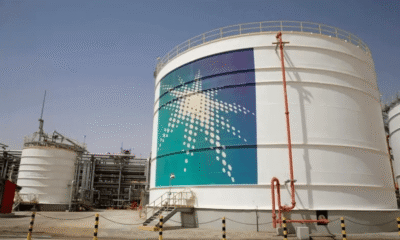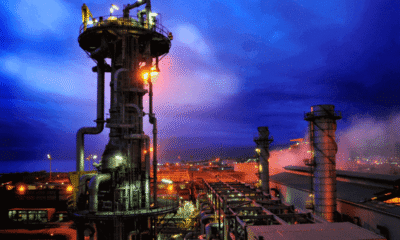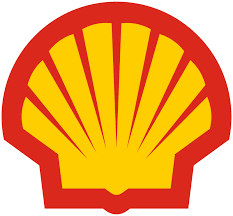Gas
After US Interest, UAE To Help Fund Nigeria-Morocco Pipeline

After growing interest from the US, the United Arab Emirates (UAE) has agreed to fund the $25 billion Morocco-Nigeria gas pipeline project.
Morocco’s Minister of Energy, Leila Benali, confirmed the UAE’s plans to provide funds for the gas pipeline. The Minister also stated that the project has gained strong financial backing from major international institutions. These organizations include the Islamic Development Bank, the OPEC Fund, and the European Investment Bank.
The gas pipeline, also called the “African-Atlantic Gas Pipeline,” will connect Nigeria’s gas network to Morocco and then travel north toward Europe.
The Nigeria-Morocco Gas Pipeline Project
Launched in 2016 during Morocco’s King Mohammed VI’s visit to Nigeria, the proposed Nigeria-Morocco pipeline aims to connect West Africa to Europe via Morocco.
The pipeline will extend over 5,600 kilometres, making it one of the longest gas pipelines in the world.
It will transport gas from Nigeria through 13 African countries to Morocco.
The pipeline will then extend from Morocco to Europe, offering a more secure and diversified route for natural gas supply to Europe.
The 13 concerned countries are Nigeria, Benin, Togo, Ghana, Cote d’Ivoire, Liberia, Sierra Leone, Guinea, Guinea-Bissau, Gambia, Senegal, Mauritania, and Morocco.
The pipeline aims to transport up to 30 billion cubic meters of gas annually.
Read: US Shows Interest in Nigeria-Morocco Gas Pipeline Project
Benefits for Nigeria, the UAE, & Morocco
The Nigeria-Morocco pipeline will position Morocco as a key energy hub, improving ties with the UAE, the European Union, and African countries. On April 23, Morocco expressed interest in an LNG terminal. The terminal will connect to an existing pipeline that links Morocco to Spain and industrial zones in Mohammedia and Kenitra. Consequently, Morocco would become a gateway for African gas to Europe.
As for Nigeria, the pipeline will cement Nigeria’s role as a significant gas supplier, rivalling Algeria and Egypt. Nigeria’s ability to export gas to Europe would deepen its economic ties and strengthen its position as a critical energy partner for Europe.
For the UAE, funding the Nigeria-Morocco pipeline will enable it to expand its growing economic footprint in Africa. The UAE has been boosting investments in Africa (ports). Therefore, the UAE is strengthening its foothold in Africa by funding the pipeline project.
Economic & Geopolitical Impact of the Nigeria-Morocco Gas Pipeline
The Nigeria-Morocco pipeline will supply cheap natural gas to West African countries. These countries need affordable gas for electricity generation and feedstock for their gas-based industries.
- Reducing Energy Poverty: Over 100 million people in West Africa lack reliable electricity. The Nigeria-Morocco pipeline could help solve this crisis.
- Cheaper Energy for Industries: A stable gas supply will help lower production costs, boosting manufacturing in Nigeria, Ghana, and Morocco.
The pipeline will provide Europe access to a new source of natural gas from Africa. Europe has long relied on Russian gas supplies to meet its energy needs. Unfortunately, the Russia-Ukraine war disrupted Russia’s gas supplies. As a result, the war pushed Europe to seek additional gas sources. Thus, the Nigeria-Morocco pipeline project will help cushion Europe from potential future supply disruptions.
Challenges & Risks
The Nigeria-Morocco gas pipeline is forecast to cost $25+ billion, making it one of Africa’s most expensive energy projects. Most of the 13 countries the pipeline will cross can’t afford to fund it due to economic and financial constraints (debt, currency devaluations). Thus, funding must come from financial institutions such as the World Bank, the African Development Bank, or private investors.
The European Union is accelerating the use of renewables to meet its energy needs, which may reduce long-term gas demand. The EU is already a global leader in developing renewable energy technology. The share of renewables in the EU’s energy usage in 2023 was 24.5%. With the revised Renewable Energy Directive in November 2023, EU member states agreed on a general renewable energy target of at least 42.5% by 2030 to reach at least 45%.
Algeria, Morocco’s key rival in North Africa, will pose a geopolitical risk for the Nigeria-Morocco pipeline. Algeria, a major gas exporter, will view NMGP as a threat to its proposed Trans Sahara gas pipeline project. It exports gas via Medgaz pipelines to Spain, Italy, and France. Algeria also shut down the Maghreb-Europe Gas Pipeline (MEGP) in 2021 due to tensions with Morocco. Algeria’s concern is that the NMGP could divert EU gas demand away from Algeria. As such, Algeria may lobby against the NMGP in the European Union or even the African Union.
Gas
Kwale Gas Gathering to Double its Gas Processing Capacity

The Kwale Gas Gathering (KGG) plant plans to undergo expansion to reach 600 million standard cubic feet daily. KGG facility was designed to process stranded gas resources in OML56.
Gas
Natural Gas Prices May 27, 2025: US, UK & Europe

Gas prices surged in the US and the UK, but held steady in Continental Europe on May 27, 2025, amid growing concerns over supply disruptions.
Prices remain after unplanned capacity cuts were announced at Norway’s massive Troll gas field due to external power issues, compounding ongoing maintenance at other key sites like Nyhamna and Aasta Hansteen.
Norway is under pressure to maintain stable flows as Europe scrambles to refill gas storage, currently at just 45%.
The US natural gas price closed at roughly $3.753/MMBtu on May 27, compared with 3.667/MMBtu recorded on May 27.
UK natural gas futures topped to 88.46 pence per therm up from 87.15 recorded on May 26.
European natural gas futures topped €37.00/MWh on May 27, down from €37.25/MWh recorded on May 26.
Read: Natural Gas Prices May 26, 2025: US, UK & Europe
Major Natural Gas Price Benchmarks
Region | Benchmark | Key Features |
United States | Henry Hub (NYMEX) | Reflects supply/demand in North America Tied to US shale gas production & pipeline infrastructure dynamics |
Europe | TTF (Netherlands) | Europe's leading gas benchmark Reflects LNG and pipeline flows from Russia, Norway, and LNG imports |
Asia | JKM (Japan-Korea LNG) | Reflects Asian demand, LNG deliveries to Japan & South Korea |
United Kingdom | NBP (National Balance Point) | Linked to European gas markets Influenced by LNG & North Sea supply Futures |
Other benchmarks include
- Oil-Linked Pricing: Some long-term contracts ( Russia’s Gazprom pipeline gas exports) still use oil-indexed pricing. Gazprom has long preferred long-term contracts and hybrid pricing with spot elements to hedge against price volatility.
- AECO Canada: It is Canada’s benchmark linked to Western Canada’s pipeline gas supply
Key Factors Influencing Natural Gas Prices
Several supply and demand factors influence natural gas prices. Below is a detailed breakdown of key aspects affecting natural gas prices:
Supply Factors
- Production Levels: Qatar, Russia, and US shale gas production heavily influence global supply. Thanks to fracking technology, the US is already the world’s top natural gas producer. Thus, higher gas production by these countries can push prices down due to oversupply.
- Storage Inventories: Natural gas is stored in underground facilities. Thus, high storage levels generally lead to lower prices. At the same time, low storage levels signal scarcity, leading to price surges.
- Imports/Exports: Fluctuations in gas exports via pipelines or LNG from key producers can significantly affect regional prices. For instance, European gas prices soared by 30% in September 2022 following the indefinite shutdown of Russia’s Nord Stream 1 pipeline. The pipeline, which runs under the Baltic Sea to Germany, historically supplied between 50 – 55 BCM/year of gas to Europe. Likewise, rising liquefied natural gas (LNG) exports by Qatar, Australia, and the US can lead to oversupply and lower prices.
Demand
- Electricity Sector Competition: Countries rely on various sources for power generation, including natural gas, nuclear power, coal, and renewable energy like wind and solar. Suppose the prices of coal and renewables increase. In such developments, electricity producers will shift to natural gas. Conversely, if coal or renewable sources become cheaper, demand for gas will fall, resulting in lower gas prices.
- Weather conditions: Weather plays a significant role in influencing natural gas prices. During the summer, there is a massive surge in the demand, especially in Europe & North America, for air conditioning systems. The high demand for electricity to cool homes and industrial plants can increase natural gas prices. At the same time, during the cold winter season, there is increased gas demand, especially across Europe, North America, and East Asia, to heat homes and industries. When chilly weather hits—like snowstorms or Arctic blasts—it can freeze up gas wells. That means less output, slower deliveries, and higher prices. Hurricanes often shut down oil and gas operations temporarily, pushing prices higher.
- Economic Growth: Strong global economic growth, especially in the US, China, Japan, South Korea, and the EU, boosts industrial demand for natural gas. The manufacturing sector (chemicals, automotive, petrochemicals) depends heavily on gas for feedstock and power generation. However, a weak global economic outlook reduces gas demand, and thus, prices drop.
Geopolitics
- Geopolitical tensions, such as the 2023-2025 Middle East Crisis and the 2022-2025 Russia-Ukraine war, negatively impact gas prices. These tensions disrupt pipeline gas or LNG supplies from producing countries (Russia, Qatar, Australia) to Europe, causing price spikes.
- Russia-Ukraine War: Sanctions on Russian gas disrupted gas supplies to Europe, causing price surges.
- Middle East Conflicts: The tensions in the Middle East impact LNG exporters like Qatar. Following the Houthi Rebel attacks on commercial shipping passing along the Red Sea, Qatar has detoured its LNG tankers towards the Cape of Good Hope (Southern Africa), a much longer route to export LNG to its European clients.
Gas
Natural Gas Prices May 26, 2025: US, UK & Europe

Gas prices saw mixed reactions in the US, the UK & Continental Europe on May 26, 2025, amid growing concerns over supply disruptions.
Prices rose in Europe after unplanned capacity cuts were announced at Norway’s massive Troll gas field due to external power issues, compounding ongoing maintenance at other key sites like Nyhamna and Aasta Hansteen.
Equinor extended a partial outage at Troll until May 30 following a compressor failure. The outage, which began after the field’s annual one-day stop-start test on May 21, has affected output by 34.6 million cubic meters per day, leaving Troll’s remaining capacity at 90 mcm/d.
Norway is under pressure to maintain stable flows as the continent scrambles to refill gas storage, currently at just 45%. Geopolitical tensions also weigh on sentiment, particularly as hopes for a Ukraine peace deal continue to fade.
The US natural gas price closed at roughly $3.66/MMBtu on May 26, compared with 3.75/MMBtu recorded on May 25.
UK natural gas futures held steady at 87.15 pence per therm.
European natural gas futures topped €37.25/MWh on May 26, up from €36.45/MWh recorded on May 23.
Read: Natural Gas Prices May 20, 2025: US, UK & Europe
Major Natural Gas Price Benchmarks
Region | Benchmark | Key Features |
United States | Henry Hub (NYMEX) | Reflects supply/demand in North America Tied to US shale gas production & pipeline infrastructure dynamics |
Europe | TTF (Netherlands) | Europe's leading gas benchmark Reflects LNG and pipeline flows from Russia, Norway, and LNG imports |
Asia | JKM (Japan-Korea LNG) | Reflects Asian demand, LNG deliveries to Japan & South Korea |
United Kingdom | NBP (National Balance Point) | Linked to European gas markets Influenced by LNG & North Sea supply Futures |
Other benchmarks include
- Oil-Linked Pricing: Some long-term contracts ( Russia’s Gazprom pipeline gas exports) still use oil-indexed pricing. Gazprom has long preferred long-term contracts and hybrid pricing with spot elements to hedge against price volatility.
- AECO Canada: It is Canada’s benchmark linked to Western Canada’s pipeline gas supply
Key Factors Influencing Natural Gas Prices
Several supply and demand factors influence natural gas prices. Below is a detailed breakdown of key aspects affecting natural gas prices:
Supply Factors
- Production Levels: Qatar, Russia, and US shale gas production heavily influence global supply. Thanks to fracking technology, the US is already the world’s top natural gas producer. Thus, higher gas production by these countries can push prices down due to oversupply.
- Storage Inventories: Natural gas is stored in underground facilities. Thus, high storage levels generally lead to lower prices. At the same time, low storage levels signal scarcity, leading to price surges.
- Imports/Exports: Fluctuations in gas exports via pipelines or LNG from key producers can significantly affect regional prices. For instance, European gas prices soared by 30% in September 2022 following the indefinite shutdown of Russia’s Nord Stream 1 pipeline. The pipeline, which runs under the Baltic Sea to Germany, historically supplied between 50 – 55 BCM/year of gas to Europe. Likewise, rising liquefied natural gas (LNG) exports by Qatar, Australia, and the US can lead to oversupply and lower prices.
Demand
- Electricity Sector Competition: Countries rely on various sources for power generation, including natural gas, nuclear power, coal, and renewable energy like wind and solar. Suppose the prices of coal and renewables increase. In such developments, electricity producers will shift to natural gas. Conversely, if coal or renewable sources become cheaper, demand for gas will fall, resulting in lower gas prices.
- Weather conditions: Weather plays a significant role in influencing natural gas prices. During the summer, there is a massive surge in the demand, especially in Europe & North America, for air conditioning systems. The high demand for electricity to cool homes and industrial plants can increase natural gas prices. At the same time, during the cold winter season, there is increased gas demand, especially across Europe, North America, and East Asia, to heat homes and industries. When chilly weather hits—like snowstorms or Arctic blasts—it can freeze up gas wells. That means less output, slower deliveries, and higher prices. Hurricanes often shut down oil and gas operations temporarily, pushing prices higher.
- Economic Growth: Strong global economic growth, especially in the US, China, Japan, South Korea, and the EU, boosts industrial demand for natural gas. The manufacturing sector (chemicals, automotive, petrochemicals) depends heavily on gas for feedstock and power generation. However, a weak global economic outlook reduces gas demand, and thus, prices drop.
Geopolitics
- Geopolitical tensions, such as the 2023-2025 Middle East Crisis and the 2022-2025 Russia-Ukraine war, negatively impact gas prices. These tensions disrupt pipeline gas or LNG supplies from producing countries (Russia, Qatar, Australia) to Europe, causing price spikes.
- Russia-Ukraine War: Sanctions on Russian gas disrupted gas supplies to Europe, causing price surges.
- Middle East Conflicts: The tensions in the Middle East impact LNG exporters like Qatar. Following the Houthi Rebel attacks on commercial shipping passing along the Red Sea, Qatar has detoured its LNG tankers towards the Cape of Good Hope (Southern Africa), a much longer route to export LNG to its European clients.
Gas
Shell Nigeria Gas Engages Stakeholders On Deepening Gas Distribution
-

 Business News4 months ago
Business News4 months agoNigeria’s Oil and Gas Reserves 2025 Reach 37 billion barrels & 210.5 TCF
-

 Oil3 months ago
Oil3 months agoCrude Oil Prices May 5, 2025: Brent & WTI Rates
-

 Oil3 months ago
Oil3 months agoSaudi Aramco Increases June Oil Prices For Asia Amid OPEC+ Supply Hike
-

 Analysis & Opinions3 months ago
Analysis & Opinions3 months agoTop Oil Producing States in Nigeria
-

 Gas3 months ago
Gas3 months agoNLNG Enters a Gas Supply Deal with Seplat Energy
-

 Business News3 months ago
Business News3 months agoCBN to Hold Its 300th MPC Meeting on May 20 2025









